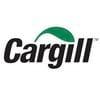Prolapse in commercial layers
Prolapse in commercial layers
Could anybody suggest me a medicine for prolapse problem in deep litter of bovans breed which are in 23 week and the weigtht is 1.500kg of bovans breed kindly suggest me the lighting program. I am incurring daily mortality of 5 birds per day. Please help me.
Chandra Sekhar
In case of prolapse rule out avian influenza. Cloacal lesion is one of the typical lesion of ai. From dead birds, you can screen rectum for streaks of hemorrhage. Collect pancreas and make 50 percent extract with saline. Centrifuge. Collect supernatant and do ha test. If the sample shows ha activity with addition of nd antiserum to pancreas extract. Even with d antiserum, the sample shows ha activity then sample is positive for ai. On the contrary, it shows inhibition means sample is positive for nd.
A.T. Venugopalan
12-2-19
Athangudi Venugopalan it is very good point, but why by pancreatic supernatent?
Good information to prevent prolapse by management tool in modern laying birds.


Current market review and perspective of Florfenicol, Tilmicocin, vitamins and aminoacids
From my practical point of view, I actually agree with the fact that reduction in the energy content will go along way in preventing the problem. Where it is seen in a lot of the birds, Choline chloride is also effective in fat burning. Reduction in the quantity of feed as well as adjustment in the time of feeding are also very important. Commercial layers can be fed during the cool hours of the day like 0700 hours and 1700-1800 hours. Reduction in energy content will require the input of an expert so as not to compromise other nutrients.
Prolapse is a condition that arises in young layers as a result of many complex reasons during growing age. Managemental practices, lighting, feed quality, nutrition and body weight at the time of point of lay, are the few key factors which predispose the condition... prolapse. In birds which are in peak or going to peak, any changes in feed and nutrition may affect the production.
Severe form of lPAI is widely prevalent. cloacal lesion and prolapse is common among layers, as on date without control of low pathogenic avian influenza control of prolapse of cloaca is difficult.
a.t. venugopalan
242-19
The phenomenon is obvious in layers where production is higher and the feed value is less than the hen physiological requirement with other management factors.
According to the latest Bovans layer management guide, at 23 weeks of age the birds should be around 1.7 kg. This is about 200 grams heavier than your birds at 1.5 kg. Light stimulating birds to bring them into production when they are underweight can cause prolapse. I would suggest that you contact your nutritionist and let him reformulate your ration to suit the weight of the birds, egg production and egg size. The objective is to reduce the egg size so that the birds are not trying to lay large or extra large eggs. Once you start this program you will need to work very closely with your nutritionist and feed supplier so that the birds don't stop laying. Don't interfere with the lighting program as this will shut the birds down, unless you want to do so and bring them back into production.
Robert Huggins, Sir.
Is it applicable to Indian conditions also? If yes, then what will happen to the shell quality post peak laying. Where in culls are sold at 1550 to 1600 GM's in cage layers in India.
Also, will it affect hen housed eggs? If not, why
Kindly explain as India is large egg producing country and eggs are sold In numbers not in GM's.
I am manager of laying farm with 60000 bird. Daily mortality is 5 to 8 birds. Usually, 3 birds regard to prolapse lesion. Herd age is 28 month. Energy level ration is 2740 kcal and cp 14.5 %. Egg weight is 68 grams. Live weight is 1700 grams. Herd breed is Hyline w36.
Are these situations worrisome?

We need to differentiate between prolapse and pullouts.
The prolapse is common in early matured birds with more body weights. I concur with the opinion of Dr. Robert Huggins, nutrition plays a main role in the conformation of body weights. Secondly, the egg size: the rupture takes place in pushing large or double yolked eggs.
Thirdly, it is common in cage laying units, Where the idle bird pulls or damage the cloaca of egg-laying bird, pulling out all the visceral parts and develop it as a vice, there will be more mortality with improper debeaking also.
























